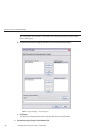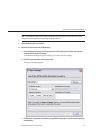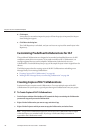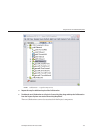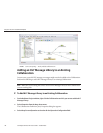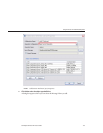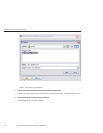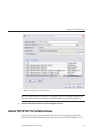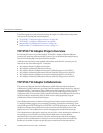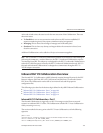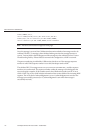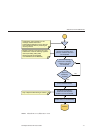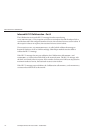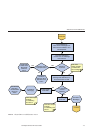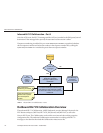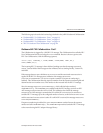
The following topics provide information about the sample V2 Collaborations and provide
instructions for copying and customizing them:
■
“TCP/IP HL7 V2 Adapter Projects Overview” on page 108
■
“TCP/IP HL7 V2 Adapter Collaborations” on page 108
■
“Inbound HL7 V2 Collaboration Overview” on page 109
■
“Outbound HL7 V2 Collaboration Overview” on page 114
TCP/IP HL7 V2 Adapter Projects Overview
Several sample Projects are provided with the TCP/IP HL7 Adapter to illustrate dierent
scenarios for connecting with external HL7 systems. You can download the sample Projects
from the Downloads page of the Java CAPS Suite Installer.
While this section focuses on the standard inbound and outbound HL7 scenarios, you can
choose from any of the following HL7 V2 samples:
■
HL7 Adapter Inbound Collaboration Projects
■
HL7 Adapter Outbound Collaboration Projects
■
HL7 Adapter Inbound Collaboration Projects With XML Support Over MLLPV2
■
HL7 Adapter Outbound Collaboration Projects With XML Support Over MLLPV2
■
HL7 Adapter Inbound Collaboration Projects With XML Support Over MLLPV1
■
HL7 Adapter Outbound Collaboration Projects With XML Support Over MLLPV1
TCP/IP HL7 V2 Adapter Collaborations
This section describes the inbound Collaboration (jcdHL7Inbound) and the outbound
Collaboration (jcdHL7Outbound), provided within the standard sample Projects for inbound
and outbound HL7 V2 messaging. These Collaborations are designed to work as is for HL7 V2
compliant interfaces, and can be congured for your specic needs using only the property
conguration les. If an interface requires special functionality, the Collaboration's Java code is
easily accessible for modication, much of which can be created graphically using the
Collaboration Editor's Business Rules Designer.
The Collaborations contain a number of Message Libraries that extend functionality for HL7
V2 message handling, logging, error messaging, journaling, and sequence numbering. These
include both generic HL7 Message Libraries for HL7 ACK/NAK generation or verication, and
the Resource Adapter that communicates to the external system and oers services to the
application server. The Collaborations control messaging protocol and all business logic.
The Collaborations are designed to target one unit of work at a time, meaning the resolution of
one message at a time. The basic structure of both Collaborations is a state machine
implemented in a Java switch statement. The state machine keeps track of the messaging
protocol so when a Collaboration is invoked, it can retrieve the state of the connection just
handed to it by the RA, and then execute the proper actions based on the state machine.
AboutTCP/IPHL7V2Collaborations
SunAdapterforTCP/IPHL7User's Guide • October2009108



